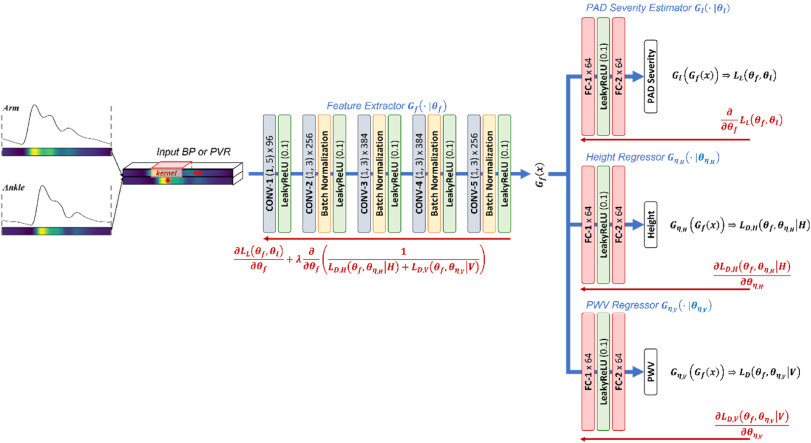2024 Peripheral Artery Disease Diagnosis Based on Deep Learning-Enabled Analysis of Non-Invasive Arterial Pulse Waveforms
본문
- Journal
- Computers in Biology and Medicine
- Date
- 2024-01
- Citation Index
- SCIE (IF: 6.3, Rank: 5.2%)
- Vol./ Page
- Vol. 168, pp. 107813
- Year
- 2024
- Link
- http://doi.org/10.1016/j.compbiomed.2023.107813 760회 연결


Abstract
This paper intends to investigate the feasibility of peripheral artery disease (PAD) diagnosis based on the analysis of non-invasive arterial pulse waveforms. We generated realistic synthetic arterial blood pressure (BP) and pulse volume recording (PVR) waveform signals pertaining to PAD present at the abdominal aorta with a wide range of severity levels using a mathematical model that simulates arterial blood circulation and arterial BP-PVR relationships. We developed a deep learning (DL)-enabled algorithm that can diagnose PAD by analyzing brachial and tibial PVR waveforms, and evaluated its efficacy in comparison with the same DL-enabled algorithm based on brachial and tibial arterial BP waveforms as well as the ankle-brachial index (ABI). The results suggested that it is possible to detect PAD based on DL-enabled PVR waveform analysis with adequate accuracy, and its detection efficacy is close to when arterial BP is used (positive and negative predictive values at 40 % abdominal aorta occlusion: 0.78 vs 0.89 and 0.85 vs 0.94; area under the ROC curve (AUC): 0.90 vs 0.97). On the other hand, its efficacy in estimating PAD severity level is not as good as when arterial BP is used (r value: 0.77 vs 0.93; Bland-Altman limits of agreement: −32%-+32 % vs −20%-+19 %). In addition, DL-enabled PVR waveform analysis significantly outperformed ABI in both detection and severity estimation. In sum, the findings from this paper suggest the potential of DL-enabled non-invasive arterial pulse waveform analysis as an affordable and non-invasive means for PAD diagnosis.
